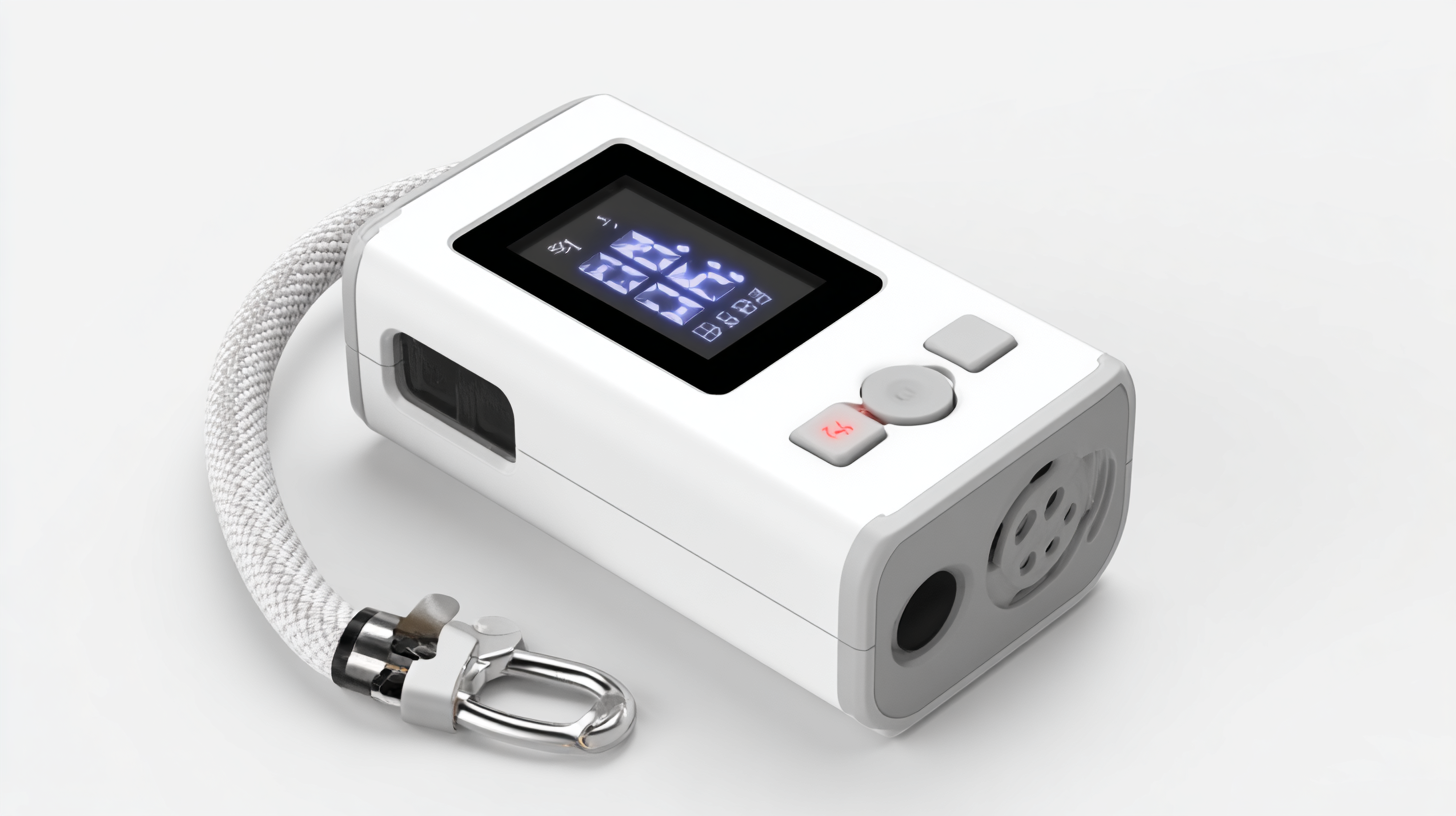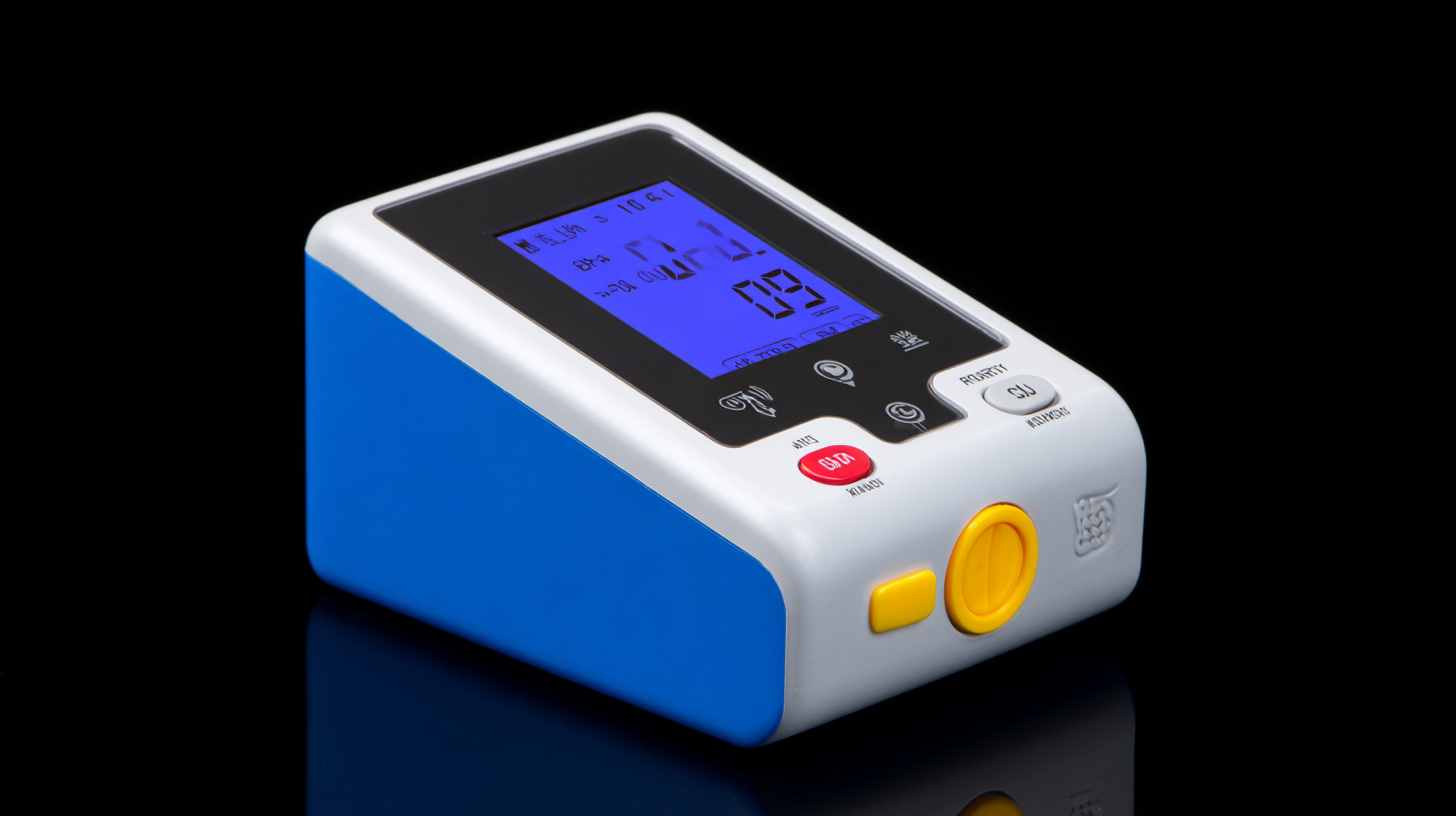Leading Global Manufacturers of Best Portable Pulse Oximeters for Your Sourcing Needs
The demand for Portable Pulse Oximeters has surged significantly, driven by a growing awareness of health monitoring and the increasing prevalence of respiratory conditions worldwide. According to a recent report from Market Research Future, the global pulse oximeter market is projected to reach approximately $2 billion by 2025, with a compound annual growth rate (CAGR) of 6.8% from 2019 to 2025. Portable Pulse Oximeters are becoming essential tools not only in hospitals but also for home care, thanks to their ability to provide real-time blood oxygen level readings, which are crucial for managing conditions like asthma and COVID-19. This blog will explore the various types of Portable Pulse Oximeters available in the market, highlighting their features and applications, while also offering guidance on how to choose the right one for your needs.

Top Features to Look for in Portable Pulse Oximeters
When searching for a portable pulse oximeter, there are several key features to consider that can enhance your experience and ensure accurate monitoring of your blood oxygen levels. First and foremost, accuracy is paramount; a reliable pulse oximeter should provide consistent readings that clinicians trust. Look for devices that have been clinically validated and offer a normal blood oxygen saturation level range of 95%-100% SpO2. Additionally, consider features such as display options, battery life, and ease of use, ensuring that the device is user-friendly for all ages and various health conditions.
Another important feature is connectivity. Some advanced models come equipped with Bluetooth technology, allowing users to track and store measurements easily on their smartphones or tablets. This capability can be particularly beneficial for individuals who need to monitor their levels regularly or share data with healthcare providers for better management of their health. Lastly, portability should not be overlooked; choosing a lightweight and compact device ensures that you maximize convenience while maintaining your health at home or on the go.

Comparative Analysis of Leading Brands in Pulse Oximetry
The market for pulse oximeters has seen significant growth, driven by an increasing prevalence of respiratory conditions and the rising demand for at-home monitoring devices. According to recent industry analyses, the global pulse oximeter market size was valued at approximately $2.5 billion in 2021, with expectations to expand at a compound annual growth rate (CAGR) of over 8% from 2022 to 2030. This growth is further fueled by advancements in technology, leading to the emergence of more user-friendly and portable models that cater to a wider consumer base.

A comparative analysis of leading brands in pulse oximetry reveals some key players setting benchmarks in the industry. These manufacturers focus on innovation, providing devices that not only enhance accuracy but also integrate features such as Bluetooth connectivity for real-time health data sharing. However, the market has also faced challenges such as price inflation and regulatory scrutiny. A notable incident involved a major manufacturer being fined for price gouging, highlighting the need for more stringent regulations to ensure fair market practices and protect consumers in an increasingly competitive landscape.
In summary, as the demand for pulse oximeters continues to rise, companies are urged to prioritize ethical practices while pushing the boundaries of technology to meet consumer needs effectively.
Understanding the Health Benefits of Using a Portable Pulse Oximeter
Portable pulse oximeters have become essential tools for monitoring respiratory health, especially in the wake of increased awareness surrounding respiratory conditions such as COPD and the effects of COVID-19. According to a report by Grand View Research, the global pulse oximeter market size was valued at approximately $1.2 billion in 2020 and is expected to grow at a compound annual growth rate (CAGR) of 8.9% from 2021 to 2028. This growth is attributed to the rising prevalence of chronic diseases and the growing emphasis on home healthcare solutions, making portable pulse oximeters more relevant than ever.
Using a portable pulse oximeter can provide significant health benefits by allowing individuals to monitor their oxygen saturation levels in real time. For instance, maintaining an oxygen saturation level of 95% or higher is crucial for optimal bodily function. Research from the American Thoracic Society indicates that early detection of low oxygen saturation can lead to timely medical interventions, potentially reducing the risk of serious complications or hospitalizations. As more consumers seek to take proactive steps in managing their health, the ease of use and accessibility of portable pulse oximeters play a pivotal role in empowering individuals to monitor their well-being effectively.
Key Considerations for Sourcing Quality Pulse Oximeters
When sourcing quality portable pulse oximeters, it's essential to consider several key factors to ensure you select the right product for your needs. First, evaluate the accuracy and reliability of the device. Look for oximeters that have been clinically validated and come with certification from relevant health authorities. This guarantees that the readings are consistent and trustworthy, which is crucial for patient care.
Another important consideration is user-friendliness. The best pulse oximeters feature large displays, simple controls, and quick readings. This not only enhances the patient experience but also ensures that healthcare providers can operate the devices effortlessly, even under demanding conditions. Additionally, consider the battery life of the oximeter; a longer-lasting battery can be a major advantage in portable settings.
Tips: When selecting a portable pulse oximeter, always seek out devices that provide additional features, such as Bluetooth connectivity for data tracking and analysis. These advanced functionalities can help in monitoring and improving patient outcomes. Moreover, don’t forget to review customer feedback and ratings to get real-world insights into the usability and performance of the device you’re considering.
How Portable Pulse Oximeters Enhance Patient Monitoring and Care
As the global demand for portable pulse oximeters rises, their role in enhancing patient monitoring and care becomes increasingly significant. By 2025, the portable pulse oximeter market is expected to reach a staggering $2.53 billion, with projections estimating a growth to $4.01 billion by 2033, reflecting a compound annual growth rate (CAGR) of 5.9%. This surge can largely be attributed to the growing prevalence of chronic diseases and advancements in wearable health technologies, which cater to the needs of patients seeking at-home healthcare solutions.
Recent studies illustrate how continuous non-invasive monitoring techniques can optimize patient management, especially in high-stakes environments such as surgery. For instance, a new randomized controlled trial highlighted the effectiveness of advanced monitoring technologies in facilitating blood management during major operations. Furthermore, the broader portable medical device market is projected to experience substantial growth, with an estimated value of $62.2 billion in 2023 and a CAGR of 9.8% forecasted through 2032. Such advancements not only improve clinical outcomes but also empower patients to actively engage in their health monitoring, exemplifying the transformative impact of portable pulse oximeters in modern healthcare.

